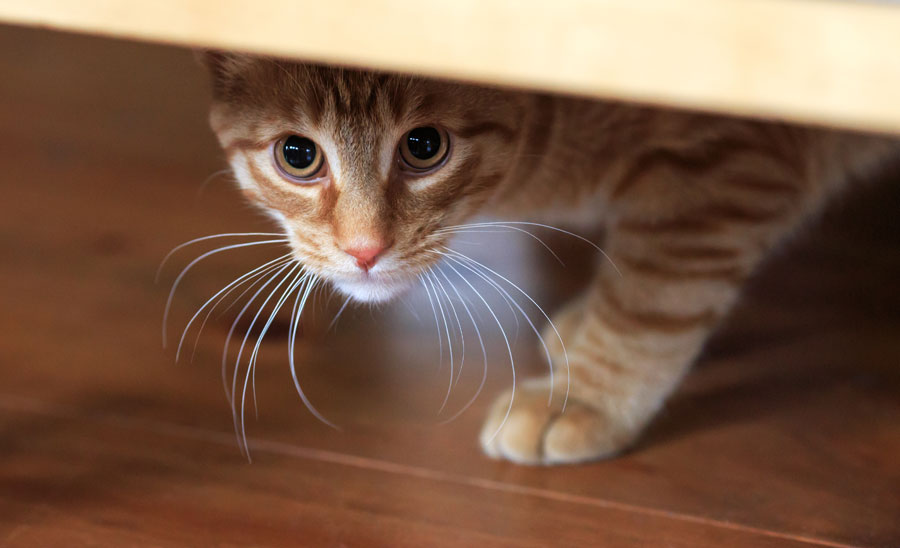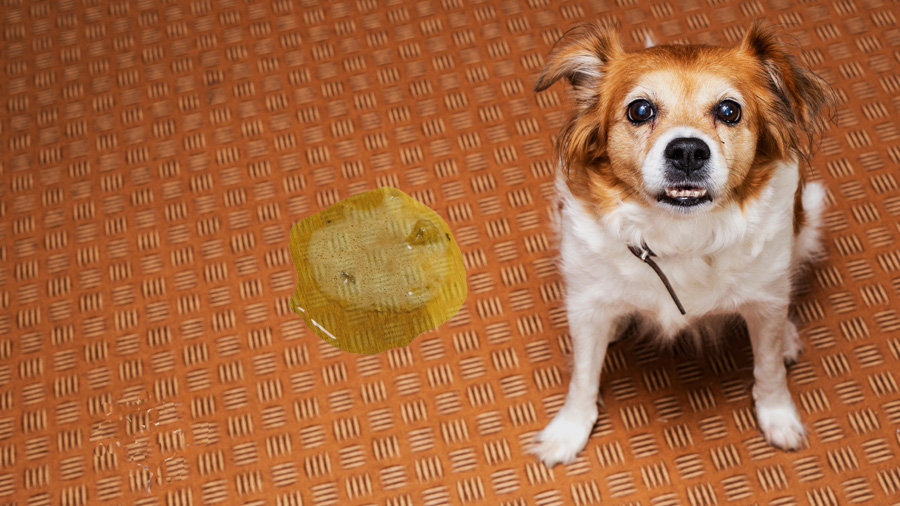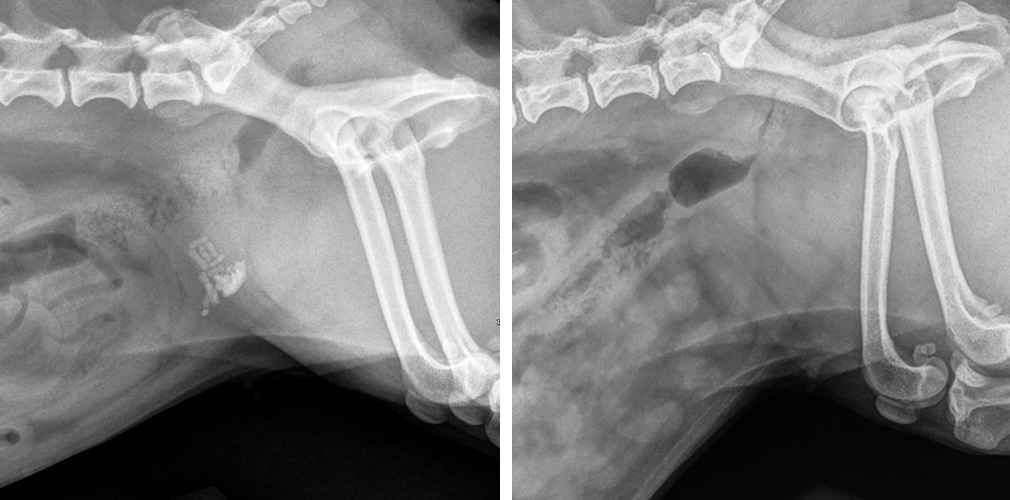Sometimes, it’s hard to tell if your pet’s problem can wait till your primary care veterinary clinic has an open appointment or if it needs to be seen right away. Dr. Canaan Shores, who heads the small animal urgent and convenient care service at the University of Illinois Veterinary Teaching Hospital, wants owners of male cats to know: A urethral obstruction requires immediate intervention and is a true emergency.
What Is a Blocked Cat?
“Blocked cat” is the layperson’s way of referring to what medically is termed a urethral obstruction.
In mammals, the kidneys filter liquid waste products from the blood, creating urine. The kidneys also help the body maintain balance in electrolytes, such as potassium and calcium. Urine travels from the kidneys via tubes called ureters to the bladder, where urine is stored. From the bladder, urine is expelled from the body through the urethra.
If the urethra becomes obstructed, urine can no longer flow through the tube. An obstruction may arise from a physical blockage, such as bladder stones, or from an anatomical blockage, such as severe inflammation or bends in the urethra.
“When it becomes blocked, the cat is no longer able to urinate, causing the bladder to distend beyond what is natural,” Dr. Shores explains. “This increased pressure in the bladder is very painful and can inhibit blood flow to the tissue of the bladder, causing it to become weakened and unhealthy.
“In addition, the increased pressure in the bladder is transmitted up the ureters, causing increased pressure in the kidney.”
This increased pressure in the kidneys can result in the inability of the kidney to do its job, leading to a buildup of toxic waste products and electrolyte imbalances.
Cats most at risk of becoming blocked are young male cats between the age of 1 and 5 years old.
“Overweight cats are more likely to be affected,” states Dr. Shores. “This disease almost exclusively affects male cats, though rarely a female may be affected.”
Signs That Your Cat Is Blocked
There are a variety of clinical signs that owners can look for to determine if their male cat is blocked.
“Initially, cats may vocalize while attempting to urinate, repeatedly strain to urinate without success, produce small amounts of bloody urine, attempt to urinate in abnormal locations outside of the litter box, and vomit,” Dr. Shores explains.
“If the owner attempts to feel the bladder in the back part of the abdomen, a large, firm, ball-shaped structure may be felt.”
The longer the cat is blocked, the more owners may see a systemic effect. Cats may appear lethargic, show decreased activity levels, quit eating, and may even become weak and collapse. That may occur because electrolyte imbalances, including too much potassium and too little calcium, may disrupt electrical activity and contractility of the heart.
“Urethral obstruction is a true emergency,” Dr. Shores warns. “If an owner sees these clinical signs in their cat, they should take their cat to a vet right away. Veterinary emergency rooms are best equipped to handle these types of emergencies, but if there isn’t an ER in the community, the cat should be taken to a primary care veterinarian.”
Treating a Blocked Cat
In the hospital, blocked cats will require strong pain medications, bloodwork to identify the electrolyte abnormalities, and a procedure once these abnormalities are taken care of.
“Next, doctors will pass a catheter, or tube, up through the urethra,” says Dr. Shores. “This procedure typically requires heavy sedation or general anesthesia.
“Once the obstruction is relieved, the bladder is flushed with saline. The urinary catheter is left in place for up to a couple days while the cat undergoes treatment.”
Treatment may include intravenous fluids, pain medication, and medications to help with symptoms such as nausea, anxiety, and stress.
“Treatment in the hospital typically continues until blood markers for kidney health have reduced to acceptable levels, the electrolytes have been normalized, and the urine is clearer. At this point, the urethral catheter can be removed and the patient discharged from the hospital.”
To prevent this condition from occurring, owners with young male cats who have not had a blockage should keep their cats at a healthy body weight and ensure their cat is staying hydrated through constant access to clean water as well as by supplementing the diet with wet food.
“One study showed that cats affected with urethral blockages were more likely to have been fed exclusively dry food compared to unaffected cats,” Dr. Shores points out. “It’s important to provide adequate enrichment for each cat in the household, as well as multiple sources of food and water, resting areas, and litter boxes.”
For cats that have experienced a blockage, anxiety medication, prescription diets to help minimize the formation of stones, and surgery may be needed on top of the suggestions listed above to avoid another urethral blockage.
By Lauren Bryan




